


Exploring Beer Ingredients
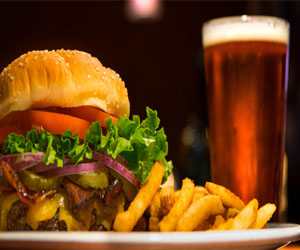
Beer, one of the world's oldest and most beloved alcoholic beverages, owes its diverse array of flavors and styles to the careful selection and combination of key ingredients. The harmony of water, malt, hops, and yeast forms the foundation of this remarkable drink, with each component playing a unique role in the brewing process.
Water: The Silent Hero
Water may seem unassuming, but it is arguably the most critical ingredient in brewing. Its composition, mineral content, and purity greatly affect the final beer. Different regions with unique water sources contribute to distinct beer styles. For instance, the soft water of Pilsen, Czech Republic, played a pivotal role in the creation of the world-famous Pilsner lager.
Malt: The Heart Of The Brew
Malt, typically derived from barley but sometimes wheat, rye, or other grains, serves as the primary source of fermentable sugars in beer. It undergoes a malting process, which involves soaking, germinating, and drying the grain to convert the starches into fermentable sugars. The variety of malt used, the degree of roasting, and the kilning process determine the color, flavor, and body of the beer. Lightly roasted malts contribute to pale lagers, while deeply roasted malts produce rich, dark stouts and porters.
Hops: The Spice Of Beer
Hops are the flowers of the hop plant and provide the bitterness, aroma, and flavor to beer. The bitterness in beer balances the sweetness of the malt, while the aromatic and flavorful qualities create the beer's distinctive taste. The choice of hop variety and the timing of hop additions during brewing greatly influence the final product. Some beer styles, like the hoppy and aromatic India Pale Ale (IPA), showcase the extensive use of hops, while others, like Belgian ales, use hops more conservatively, emphasizing yeast character.
Yeast: The Magical Microorganism
Yeast, the smallest but most vital ingredient, is responsible for fermentation, the process that transforms the sugars in the malt into alcohol and carbon dioxide. Yeast strains vary in their fermentation characteristics, producing different flavors, aromas, and esters in beer. The yeast strain used is a defining factor in the creation of specific beer styles. Ale yeast, with its higher fermentation temperatures, imparts fruity and estery notes, while lager yeast, fermented at cooler temperatures, yields cleaner and crisper flavors.
Adjuncts: The Flavor Enhancers
In addition to the core ingredients, brewers may employ adjuncts to impart unique flavors and characteristics to their beer. These can include spices, fruits, herbs, and even unconventional ingredients like coffee, chocolate, or wood. Adjuncts allow brewers to experiment and craft innovative, memorable brews.
Crafting The Perfect Recipe
The art of brewing lies in the brewer's ability to select the right combination of these ingredients to create a beer that is balanced, flavorful, and true to its style. The careful manipulation of water chemistry, malt types, hop varieties, and yeast strains allows brewers to craft an extensive range of beer styles, each with its unique taste and character.
The four primary ingredients in beer—water, malt, hops, and yeast—provide the essential building blocks for the complex world of brewing. It's the knowledge, creativity, and skill of the brewer in selecting, combining, and balancing these ingredients that result in the delightful variety of beers we enjoy today. The next time you savor a cold beer, take a moment to appreciate the harmonious interplay of these ingredients and the craftsmanship that goes into every glass. Cheers to the remarkable world of beer and its foundational ingredients!
Beauty From The Earth, For The Earth
 Nature's Bounty: Natural cosmetics are crafted from botanical and organic ingredients such as plant extracts, essential oils, and minerals. These clean ingredients nourish the skin, providing a safer and more holistic approach to beauty.
Nature's Bounty: Natural cosmetics are crafted from botanical and organic ingredients such as plant extracts, essential oils, and minerals. These clean ingredients nourish the skin, providing a safer and more holistic approach to beauty.
Clean Formulations: Natural cosmetics are free from harsh chemicals, synthetic fragrances, and toxic additives commonly found in conventional cosmetics. They prioritize the use of clean, safe, and non-toxic ingredients, reducing the risk of skin irritations, allergies, and long-term health concerns.
Environmental Consciousness: Many natural cosmetics brands embrace sustainable and eco-friendly practices. They focus on sourcing ingredients responsibly and use recyclable or biodegradable packaging, significantly reducing their environmental impact.
No Animal Testing: A significant portion of natural cosmetics is cruelty-free, meaning they don't test their products on animals. This aligns with the principles of ethical consumerism and compassionate treatment of animals.
Transparency And Accountability: Natural cosmetics brands are known for their transparency. They provide detailed information about their ingredients, sourcing, and production processes. This allows consumers to make informed choices about the products they apply to their skin.
Safer Makeup Alternatives: Natural cosmetics extend beyond skincare to include makeup products like foundation, lipstick, and mascara. Clean cosmetics offer safer alternatives for enhancing beauty without compromising health or the environment.
Holistic Beauty: Natural cosmetics encourage a holistic approach to beauty. They emphasize that beauty is not merely skin-deep and is deeply intertwined with overall well-being, mental health, and self-confidence.


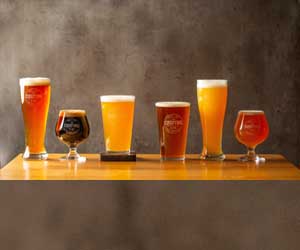
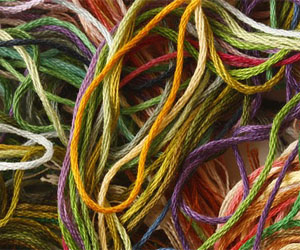
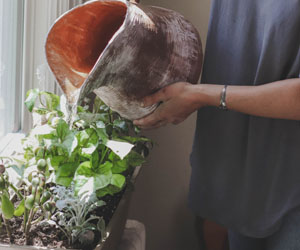

Nourishing Your Locks Naturally
 No Harmful Chemicals: Conventional haircare products often contain harsh chemicals that can strip hair of its natural oils and lead to damage and breakage. Organic haircare products are free from these potentially harmful chemicals, which means they're less likely to cause long-term damage to your hair.
No Harmful Chemicals: Conventional haircare products often contain harsh chemicals that can strip hair of its natural oils and lead to damage and breakage. Organic haircare products are free from these potentially harmful chemicals, which means they're less likely to cause long-term damage to your hair.
Environmentally Friendly: Organic haircare brands often prioritize sustainable and eco-friendly practices. They use ingredients sourced from ethical and sustainable suppliers and package their products in recyclable or biodegradable materials. This reduces the environmental impact of haircare routines.
Nourishing Ingredients: Organic haircare products often contain nourishing and hydrating ingredients like aloe vera, coconut oil, argan oil, shea butter, and essential oils. These natural components provide moisture, shine, and strength to your hair.
Safer For Color-Treated Hair: For those who color their hair, organic haircare products can be gentler and safer. They help maintain the vibrancy of hair color without the risk of fading or damage.
Holistic Hair Health: Organic haircare takes a holistic approach to hair health. It emphasizes the interconnectedness of overall well-being with healthy hair. A well-balanced diet, adequate hydration, and reduced stress are all factors that contribute to the well-being of your hair.
Gentler On Sensitive Scalps: Organic haircare products are formulated with milder, natural ingredients that are less likely to irritate sensitive scalps. They can help alleviate issues like dandruff, itchiness, and flakiness without causing further discomfort.
Needle And Thread
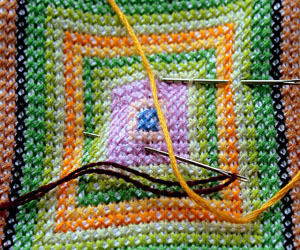 The Thread's Transformative Power: Thread, on the other hand, is a slender strand of material that comes in numerous forms, including cotton, silk, wool, and synthetic fibers. Its primary function is to connect, bind, and adorn. When combined with the needle, thread takes on the role of an artist's brush, creating intricate designs, securing seams, and adding decorative elements to fabrics. The choice of thread can dramatically impact the final outcome, from the sheen of silk to the durability of polyester.
The Thread's Transformative Power: Thread, on the other hand, is a slender strand of material that comes in numerous forms, including cotton, silk, wool, and synthetic fibers. Its primary function is to connect, bind, and adorn. When combined with the needle, thread takes on the role of an artist's brush, creating intricate designs, securing seams, and adding decorative elements to fabrics. The choice of thread can dramatically impact the final outcome, from the sheen of silk to the durability of polyester.
Sewing And Fabric Mending: At its core, the needle and thread serve the practical purpose of sewing and mending fabric. From fixing a torn hem to attaching buttons, these tools are essential for extending the lifespan of clothing and textiles. This ability to repair and restore not only saves money but also contributes to sustainable and eco-friendly practices by reducing waste.
Embroidery And Artistry: One of the most celebrated applications of the needle and thread is in the realm of embroidery. This art form involves the use of different stitches and thread colors to create intricate and beautiful designs on fabric. It has been used for centuries to embellish clothing, linens, and decorative items, adding a touch of elegance and personalization to everyday objects.
Cultural And Traditional Significance: Needlework, often passed down through generations, carries cultural and traditional significance in many societies. It can tell stories, showcase regional motifs, and connect individuals to their heritage. Each culture has its unique stitching techniques and designs, making the needle and thread a powerful tool for cultural preservation.
Turning Old Into Gold
 2. Gather Inspiration
2. Gather Inspiration
Before diving into a project, seek inspiration from online platforms, books, or upcycling communities. Ideas are everywhere, and seeing what others have created can fuel your creativity and help you come up with unique, sustainable designs.
3. Choose Quality Over Quantity
When selecting items for upcycling, opt for quality over quantity. Well-made, durable pieces will last longer and provide better raw materials for your projects. This approach ensures your upcycled creations have a longer life as well.
4. Declutter Responsibly
Before tossing old items, consider whether they can be upcycled. Decluttering responsibly by finding new uses for items you no longer need reduces your environmental impact and keeps useful materials out of landfills.
5. DIY Tools And Supplies
Invest in a set of basic DIY tools, like a good-quality glue gun, a sewing machine, and paintbrushes. Having the right tools will make your upcycling projects easier and more enjoyable.
A Journey Through Innovation And Diversity
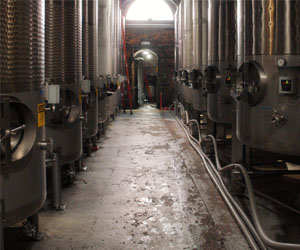 Diverse Terroirs: One of the remarkable features of New-World wines is the wide range of terroirs they encompass. New-World wine regions can be found across the globe, from the high-altitude vineyards of Argentina to the cool-climate wine regions of Oregon. This diversity allows for the cultivation of various grape varieties, each suited to specific terroirs. As a result, New-World wines offer an array of flavors and styles that cater to a broad spectrum of preferences.
Diverse Terroirs: One of the remarkable features of New-World wines is the wide range of terroirs they encompass. New-World wine regions can be found across the globe, from the high-altitude vineyards of Argentina to the cool-climate wine regions of Oregon. This diversity allows for the cultivation of various grape varieties, each suited to specific terroirs. As a result, New-World wines offer an array of flavors and styles that cater to a broad spectrum of preferences.
New Grape Varieties: New-World winemakers have been open to experimenting with grape varieties from around the world, introducing lesser-known grapes into their vineyards. For example, in the United States, you'll find varieties like Zinfandel and Petite Sirah, which are less common in European regions. This willingness to diversify grape varieties has led to the discovery of new and exciting flavor profiles, expanding the options available to wine enthusiasts.
Emphasis On Approachability: New-World wines are often celebrated for their approachability. While Old-World wines can sometimes come across as complex and reserved, New-World wines tend to be more fruit-forward, making them accessible to a wider audience. This approachability has contributed to the global popularity of New-World wines.
Innovative Aging Techniques: Many New-World winemakers have embraced modern aging techniques, such as the use of oak barrels from different regions, new oak versus old oak, and a range of toasting levels. These practices have helped create wines with distinctive characteristics, pushing the boundaries of traditional winemaking.
Sustainability And Environmental Practices: New-World wine regions have also been at the forefront of sustainable and eco-friendly winemaking practices. Many vineyards and wineries prioritize sustainability, organic farming, and environmentally responsible practices. This commitment to preserving the land and minimizing the environmental impact is a crucial aspect of New-World winemaking.